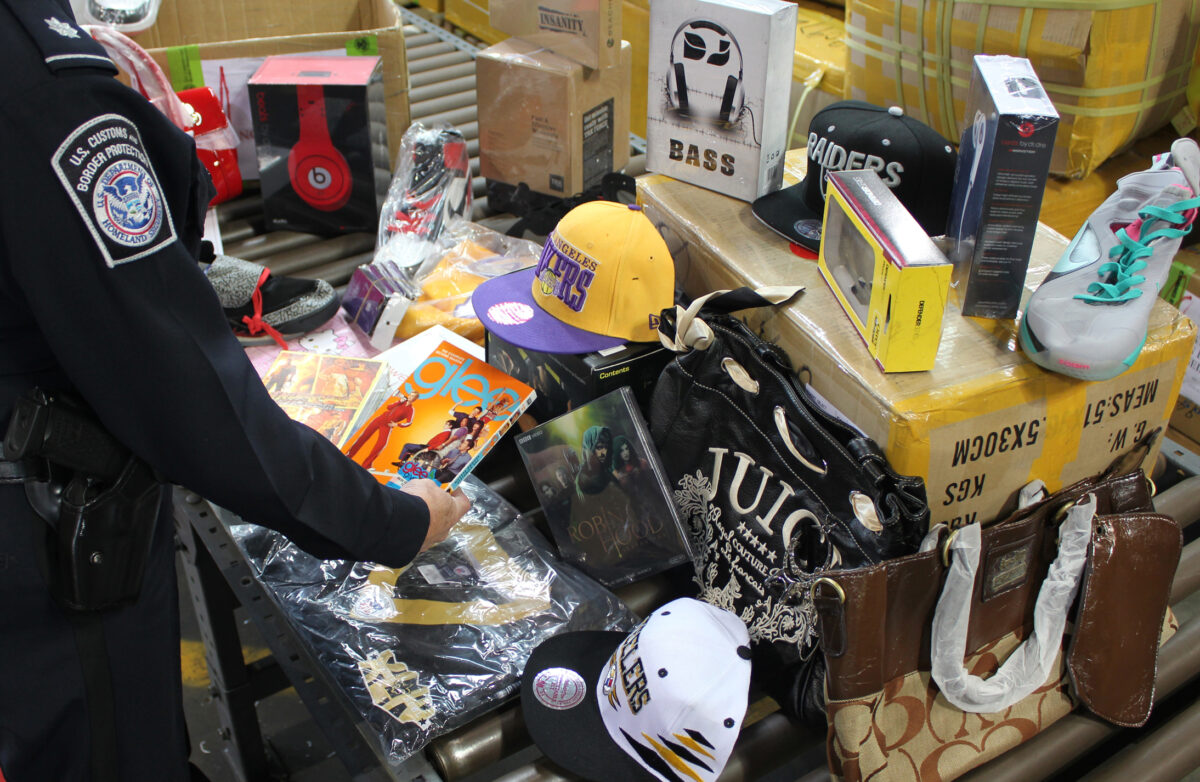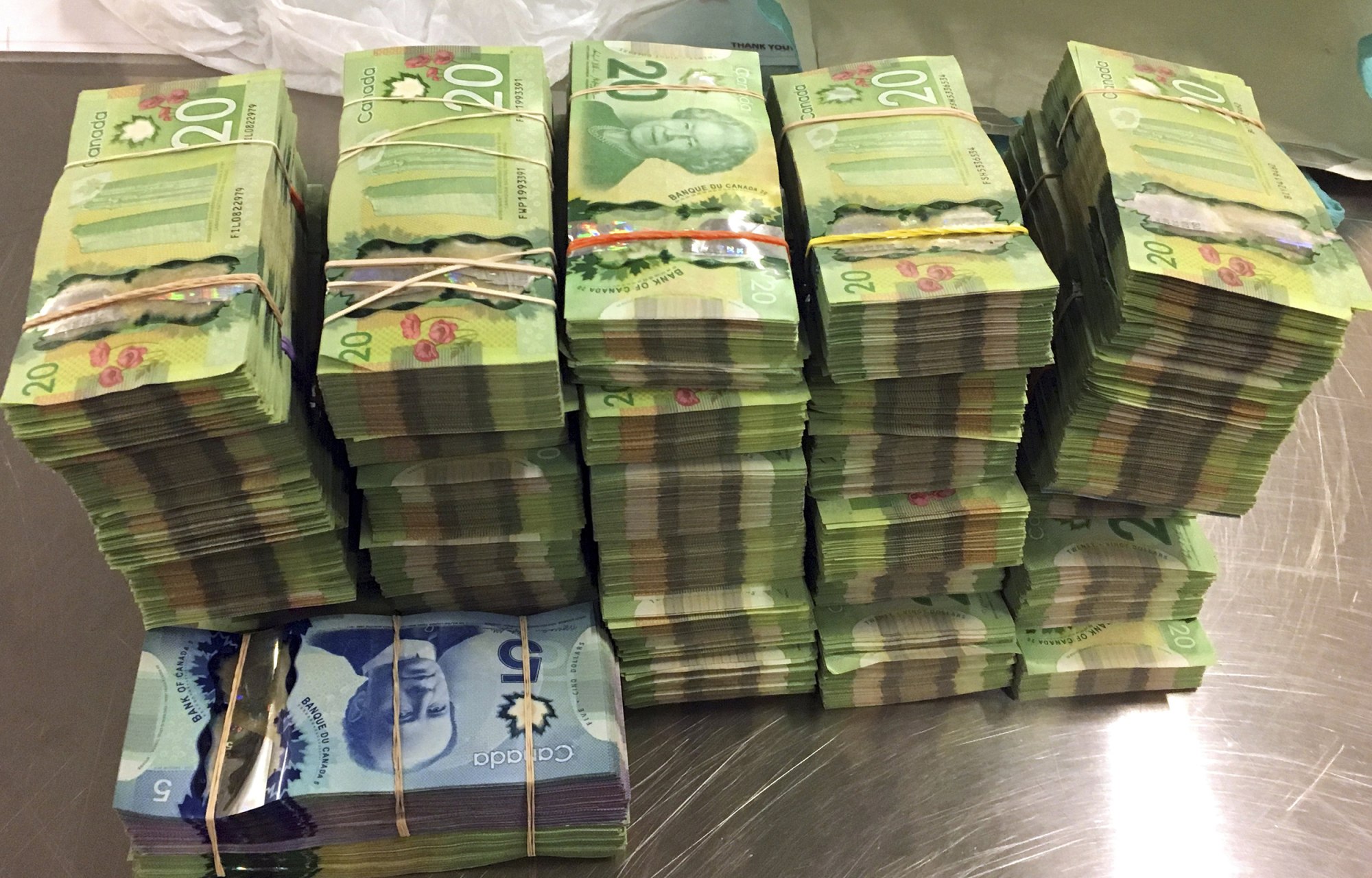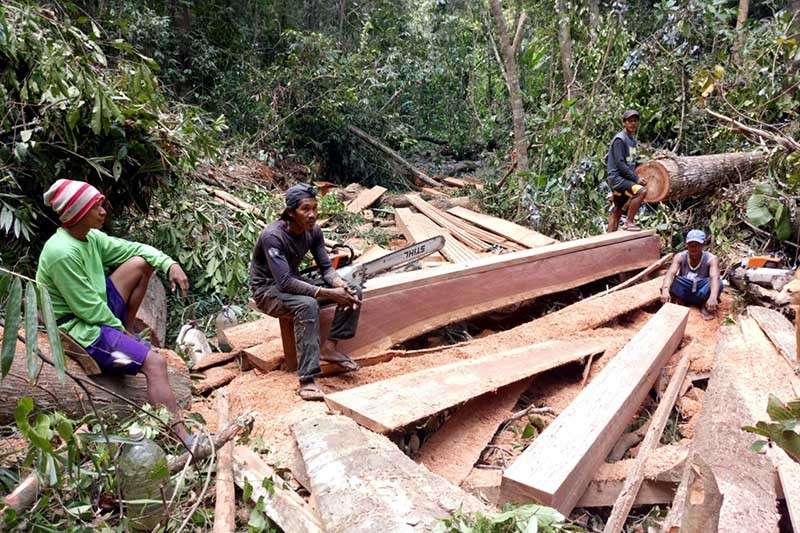The world’s top five organized crime rackets
Counterfeit products, illegal drugs, human trafficking among top money makers for international crime groups

Online display ads on your computer and apps on your smart phone might include malware linked to a truly modern organized crime racket – digital ad fraud. Over the past few years, this underrated scam has risen to become one of the biggest money-earning illegal rackets worldwide.
Last year, online advertisers lost about $35 billion in payments to fraudsters who used automated bots and “click farms” of employees to imitate ad impressions and fake viewership to receive payments, according to the Israel-based cybersecurity firm CHEQ. Fraudulent phone apps alone garnered $4.8 billion for scammers last year.
Digital ad fraud, born of the fourth industrial revolution of technology, is one of the latest lucrative organized crime schemes in a world economy increasingly globalized since the 1980s. How does it stack up to the other profitable international rackets as of 2021? It’s up there, but nowhere near the largest illegal businesses operated by crime groups.
Rackets are illegal businesses operated by criminal organizations to produce cash profits for members. The oldest of crime rackets include theft, burglary, armed robbery, extortion, loan sharking, smuggling, murder, prostitution, narcotics, counterfeiting, illicit gambling, tax evasion, labor racketeering and fraud.
It was around the time that traditional American organized crime entered a steep decline in the mid- to late 1980s that the globalization of the world’s economies began to take shape, and international crime plots expanded with it, according to the FBI.
As of 2021, total revenues for what are known as transnational organized crime (TOC) groups approach $2 trillion per year. Online access permits TOCs to commit crimes from almost anywhere. As the FBI states:
“TOC groups may encompass both the Eastern and Western hemispheres and include persons with ethnic or cultural ties to Europe, Africa, Asia, and the Middle East. These groups, however, are able to target victims and execute their schemes from anywhere in the world; thus, the extent of their presence within a particular area does not necessarily reflect the degree of the threat they pose.”
Here are the top five most profitable rackets for the world’s transnational crime outfits:
1. Counterfeit products and pirating
The counterfeiting of proprietary consumers goods and pirating of copyrighted movies and other digital content – collectively known as intellectual property theft – make for the world’s most valuable crime racket.
Consumers drive these crimes, looking for bargains on faked versions of branded items they want. Organized crime is happy to provide them. And it works like a charm. The Global Brand Counterfeiting Report of 2018, by the India-based business think tank R Strategic Global, put the total profits from worldwide counterfeiting and piracy at $1.2 trillion as of 2017, and projected that to rise to $1.8 trillion by 2020.
Counterfeiters take advantage of brand-name consumer products by copying items protected by trademark, including toys, medical equipment, pesticides, phones, auto parts, electronics, food and beverages, and then selling them at a markdown prices. They imitate well-known items using cheap substances, such as low-quality fabrics and low-dose chemicals, which are used in fake and ineffective pharmaceuticals.
Piracy is mainly the online theft and infringement of copyrighted entertainment products, such as on-demand movies, TV shows, and illegally intercepting broadcasts from subscriber-only streaming services. Cyber-pirates also exploit websites such as YouTube to steal and sell protected videos. Others sell illegally copied DVDs and CDs.
Estimated losses to multinational product makers from online orders of falsified items alone in 2017 was about at $323 billion. For makers of high-end consumer products – i.e., clothing, footwear, handbags, watches and sunglasses – losses totaled about $30.3 billion. The Organization for Economic Co-operation and Development (OECD), a business institute in Paris representing 38 nations, learned that the most popular brands for fakes are watches by Rolex, apparel by Louis Vuitton and Gucci and shoes by Yeezy and Croc. The counterfeit products searched most often by consumers online are fabricated Gucci belts and slide sandals. Countries with companies suffering the biggest financial losses from knockoff purchases are the United States, France, Italy, Switzerland and Germany.
Profits for counterfeiters are ever increasing with the expansion of e-commerce platforms such as Amazon, eBay and China’s Alibaba and Baidu. It extends to the COVID-19 pandemic era. Criminals in Italy, for example, have hawked counterfeit protective masks and fake vaccines.
As many as two out of five products sold on the Internet these days are counterfeit, according to a study by the U.S. Government Accounting Office.
More than 55 percent of the worldwide supply of bogus goods come from many low-paying, mass-producing “sweat shop” factories in China. Another 25 percent originate from China-run Hong Kong. Most are shipped inside thousands of containers by sea to ports where customs officials are overwhelmed or receive bribes to look the other way. The leading export points include Hong Kong, Singapore, Saudi Arabia, Africa, the Ukraine and the European Union.
Many fake goods come from online orders sent en masse in small packages to consumers by international post or express mail. In the United States, the sheer volume of millions of these parcels makes it hard for Customs and Border Protection officers to locate and intercept them.
What is the single most smuggled product in the world? Answer: cigarettes. About 600 billion of the tobacco products are trafficked per year. The main goal is tax evasion, worth about $30 billion a year, according to the United Nations Office on Drugs and Crime (UNDOC).
2. Drug Trafficking
Information on profits from drug trafficking (specifically heroin, cocaine, marijuana. LSD, methamphetamine, ecstasy and fentanyl) can be inexact and present challenges for investigators. Hence, the disparities in estimated revenues for global illegal drug sales. Still, the profits are alarmingly high, and qualify as the world’s second most lucrative racket.

One study by the Washington, D.C., nonprofit research firm Global Financial Integrity estimated the yearly worth of illicit narcotics sold worldwide at between $426 billion and $652 billion. Meanwhile, the perhaps overly cautious OECD places it from a low of $45 billion to a high of $500 billion. The OECD blames the wide range on the difficulty of measuring varied sets of data on drug prices from different countries, imprecise methodology and flawed assumptions by researchers.
Heroin remains the most profitable of illegal drugs. More than 430 tons of it flows into the global market per year, according to the UNDOC. Afghanistan produces by far the highest amount of opium used to make heroin – 380 tons annually – with only five tons of it seized and 375 tons trafficked. From there, the drug is distributed on two main paths. The Balkan Route, which transports about $20 billion worth of heroin per year, runs through Iran, Turkey, Greece, Bulgaria, and Southeast and Western Europe. The Northern Route, valued at $13 billion a year, wends its way via Tajikistan and Kyrgyzstan to Kazakhstan and the Russian Federation.
Europe has emerged in recent years as a major destination for cocaine trafficking, with Colombia as the leading source of supply. The cocaine smuggled into the United States originates mainly in Peru and Bolivia.
In the United States alone, illegal drug users spent $150 billion in 2016, with marijuana and heroin being the largest retail markets, according to the RAND Corp.
Mexico, long a significant source of trafficking to the U.S., has seen changes in criminal rackets recently. The country has nine main drug trafficking groups, as of 2020, the Congressional Research Service reported. The Sinaloa and Jalisco New Generation cartels still reign. Mexico grows opium and sends heroin to the United States. It ranks with China in fentanyl trafficking. However, the value of its drug trafficking has declined to as little as $10 billion to $20 billion a year, or only 1 percent of Mexico’s gross domestic product, Forbes magazine reported in 2021. Why? Mexican groups have shifted toward more-profitable human and commercial sex trading, with migrant trafficking alone being a $41 billion business in 2020, and, as we will see later, fuel theft.
3. Human trafficking and forced labor
This category involves the exploitation of human beings, from migrant trading and exploiting people for commercial sex trafficking to forced labor (adults and children), or what experts call “modern slavery.” As of 2017, about 25 million people worldwide were trapped in a state of slavery, about 71 percent of them women and girls, according to the International Labor Organization (ILO) of Geneva. Most of the women and girls were trafficked for sex work, the men and boys for agricultural, mining and construction labor. The ILO estimated in 2016 that criminal captors earned $150 billion in profits from forced labor, $99 billion of it from commercial sexual work and $51 billion from agricultural, domestic and other compulsory toil. The human trafficking and forced labor take place in developed and undeveloped economies, from the Asia-Pacific region to Africa, Europe, the Middle East, Latin America and North America.
Human trafficking only happens “with the collusion of corrupt officials with criminal gangs,” the OECD reported.

4. Illegal logging
The removal and sale of illegally cut timber has been profitable for many years but has soared lately to rank among the world’s foremost rackets. The value of illicit wooden logs obtained by cross-border organized crime networks ranges from $51 billion to $152 billion per year as of 2021, according to the U.S. Agency for International Development.
Valuable rare timbers such as rosewood, the most in-demand wood in Asia (often used in fine furniture and musical instruments), and mahogany are among those harvested and stolen in violation of permitted quotas and local controls on overcutting tree species. Other thieved logs are “laundered” through legitimate plantations and front companies to saw mills for conversion to construction timber, wood paneling and paper. The hot spots for timber thefts are Southeast Asia (including Cambodia and Indonesia), Central and South America (Peru, Colombia and Brazil, especially the Amazon Basin), Western and Central Africa, British Columbia and the U.S. Pacific Northwest.

The scope of this lesser-known racket is enormous, with little awareness among consumers of wood products. Interpol, the European law agency, found that illegal logging creates 15 to 30 percent of all the world’s forest products. Crime networks commonly falsify logging permits, offer large cash bribes to government officials and hide illegally cut logs by mixing them with legal ones. As a result, countries and cities literally lose billions in uncollected taxes. Some of the illicit logging networks receive funding via hidden investors from Asia, the European Union and the United States.
5. Fuel theft
Another underrated global racket is the theft of one of the world’s most precious commodities – fuel, including crude oil, diesel, gasoline and other refined liquid energy. Companies transferring vast amounts of fuel are necessarily vulnerable to thieves.

The London-based accounting firm Ernst & Young estimated this year that stolen fuel amounts to $133 billion annually. The leading culprits are Mexican drug cartels, Italy’s Mafia and syndicates from East Europe and Africa. Among the main targets for thefts are oil pipelines, refineries and ships. The top countries for this theft include Mexico, Nigeria and Azerbaijan. Thieves aim for refineries for the large caches of fuel stored in one place.
Mexico’s state-owned oil giant Pemex loses more than $1 billion per year from constant tapping of fuel pipeline flows and refineries by organized gangs. Some drug cartels have shifted to fuel theft, seen as more lucrative and less risky than smuggling drugs, according to Mexico News Daily of Oaxaca, Mexico. Cartel gangs, including Los Zetas, Caballeros Templarios and Santa Rosa de Lima, rip off fuel through extortion, violence and kidnapping of company employees, corrupting police and politicians, and mass murders of rival gang members. More than 1,100 illegal taps of Pemex’s gasoline pipelines took place just in September 2020, and taps increased five-fold from 2011 to 2016. Gangs often peddle the gas to the public in small containers at a large discount.
Fuel bandits use a number of different methods aside from diverting from pipelines, according to the trade publication Oilman Magazine. Organized stealing also takes place at sea, with criminals sending small barges to intercept and transfer fuel from oil tankers. Other groups, such as off the coast of Libya, conspire to remove fuel from a legitimate ship to a criminal ship, and then trade it to various countries as an import. Armed rings of Nigerian pirates storm moving tankers and rob fuel at gunpoint in the Gulf of Guinea. Corruption is crucial for these plans to work – 57 percent of oil thievery involves bribery of officials along the way, Ernst & Young reported.
Feedback or questions? Email blog@themobmuseum.org





